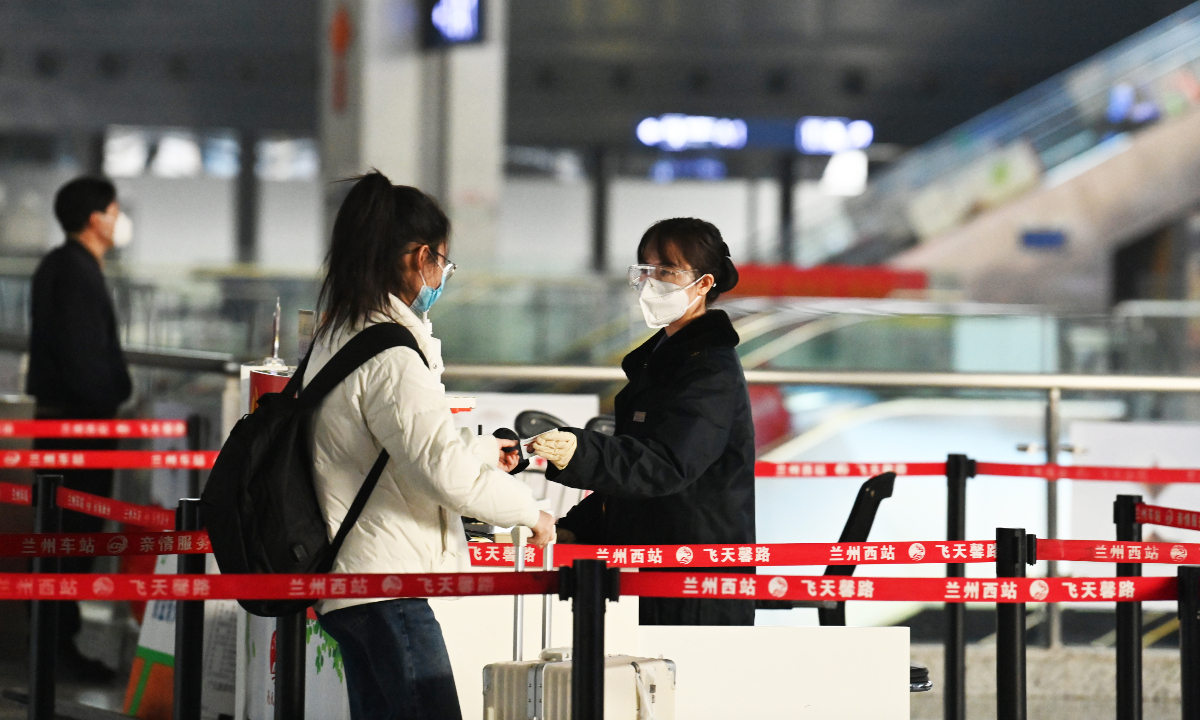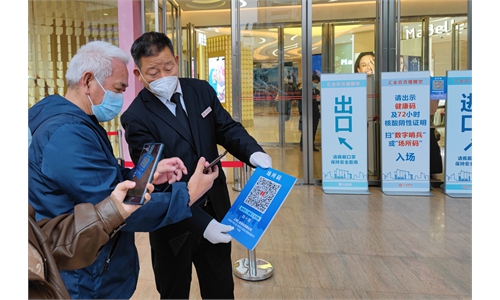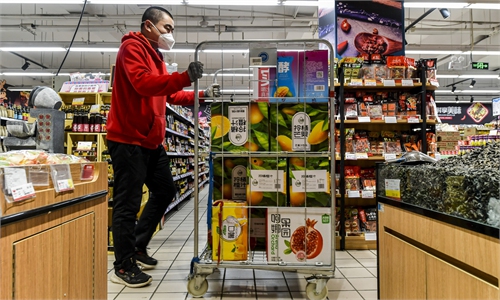COVID-19 trace tracking system ‘itinerary code’ terminates service, drawing to close of pandemic-related controls

Passengers use their ID cards to enter a railway station in Lanzhou, Northwest China's Gansu Province on December 9, 2022. Starting from December 7, China Railway scrapped the previous requirement for a 48-hour negative nucleic acid result and health code for travel by train. Photo: IC
The itinerary code, which people in China use in the course of everyday life tied to travel risks to move around different localities for almost three years since the outbreak of the COVID-19 pandemic, will be removed starting Tuesday, marking the Chinese society a step further toward end of COVID-related controls.
This system, which provided COIVD-19 trace tracking service, together with a health QR code that tracks individuals' health statuses, recorded people's movements into public spaces across China.
Chinese three telecom giants China Telecom, China Mobile and China Unicom on Monday announced that all the travel history data will be deleted synchronously following the end of the COVID-19 trace tracking system starting from Tuesday, protecting personal information security in accordance with the law.
The itinerary code is coming to an end, which means that another restriction on travel across cities and provinces has been officially lifted following the cancellation of negative nucleic acid results for flights and trains.
After the cancellation of the itinerary code was announced, the number of searches for cross-provincial transportation and vacation products during the Spring Festival increased 12 times compared to the same period last week from 0:00 am to 13:00 pm on Monday, and the number of searches for plane tickets was basically the same as before the epidemic.
Online, Chinese netizens expressed a diverse range of reactions. The itinerary code that had been part of the epidemic has recorded the sacrifices and efforts of many ordinary Chinese people over the last three years. Quite a few people posted screenshots of their itinerary code to commemorate having "witnessed history."
A blogger and observer of social events on WeChat, said the end of the itinerary code means that all previous epidemic prevention and control requirements based on the code will also be taken "offline." This is an important step forward for Chinese society in resuming the normal flow of people as soon as possible, the observer added.
In response to the issues of privacy security related to the itinerary code that the public is concerned about, some experts said on Monday that all personal information collected and stored by the itinerary code should be deleted in time in accordance with the country's Personal Information Protection Law.
The itinerary code is provided by China's big three telecom companies, in which location history is tracked through mobile phone connections. The code was removed to better implement the newly optimized COVID-19 prevention and control measures.
Moreover, the location tracking system, the itinerary code, is able to cross-check the holder's travel on transportation with potentially exposed or diagnosed patients. Chinese cyberspace authorities emphasized in early 2020 that digital responses to the nascent pandemic should not use personal information for other purposes.
The system has undergone several functional adjustments, including no longer associating users' visits to high and medium-risk areas with their health conditions, and changing the coverage period of query results from 14 days to seven days.
China has further adjusted its COVID response by releasing 10 new measures on December 7, including allowing some asymptomatic carriers and mild COVID-19 patients to quarantine at home, and scrapping negative nucleic acid results and health code requirements for entering most public places.
However, the adjustments have led to a degree of concern among the public about whether the risk of infection might be higher than before. According to media reports, currently the average daily sales of COVID-19 antigen self-testing kits have increased more than 400-fold compared with November.
A total of 2,240 confirmed cases and 6,598 asymptomatic infections were reported on the Chinese mainland on Sunday, with 37,968 confirmed cases still under medical observation and treatment nationwide as of the same day, according to figures released by the National Health Commission on Monday.
Optimizing epidemic prevention measures is just the beginning of a new phase in the fight against COVID-19 in China. The epidemic has not yet reached its peak across the country, and the country will face pressure caused by increasing cases scramble for medical resources over coming months, Wang Guangfa, a respiratory disease expert from Peking University First Hospital, told the Global Times on Monday.
Many epidemiologists said such optimized measures aim to strike a better balance between COVID-19 control and ensuring people's normal lives, as well as help society return to normal operation at an early date.
The latest wave of COVID-19 infections in Guangzhou, South China's Guangdong Province, is likely to peak between early- to mid-January and mid-February in 2023, and society will return to pre-epidemic conditions in the first half of 2023, China's top respiratory disease expert Zhong Nanshan said on Friday. Guangzhou was among the first Chinese cities that adopted relaxed COVID-19 restrictions.
Global Times


